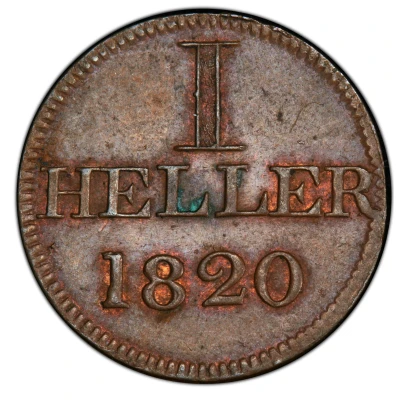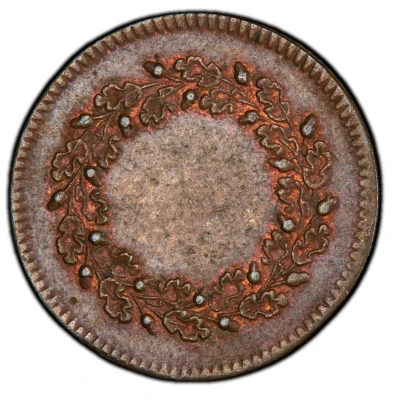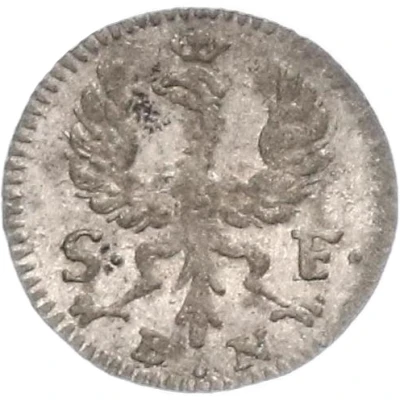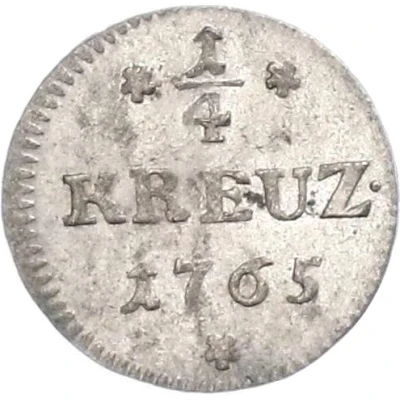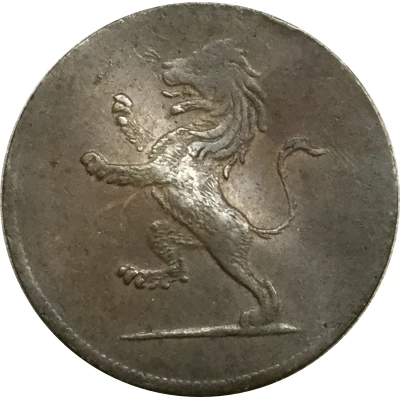
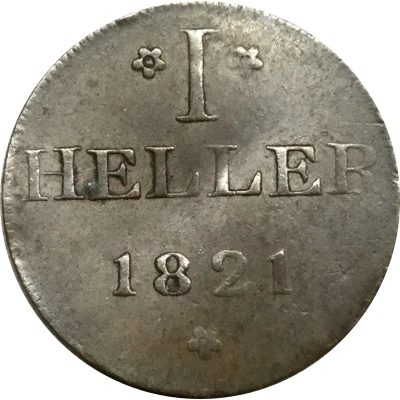

1 Heller Judenpfennig
1821 year| Copper | - | 18 mm |
| Issuer | Free imperial city of Frankfurt (German States) |
|---|---|
| Period | Free City (1372-1866) |
| Type | Token |
| Year | 1821 |
| Value | 1 Heller (1⁄480) |
| Currency | Thaler |
| Composition | Copper |
| Diameter | 18 mm |
| Shape | Round |
| Orientation | Coin alignment ↑↓ |
| Demonetized | Yes |
| Updated | 2024-10-05 |
| Numista | N#93954 |
|---|---|
| Rarity index | 79% |
Reverse
Three-line inscription with date and denomination.
Script: Latin
Lettering:
❀ I ❀
HELLER
1821
❀
Comment
Name for copper coins ILLEGAL at the beginning of the 19th century in the Rhenish florin currency area (HPTS. Probably in the Frankfurt region) distributed in large quantities. The denomination became established by the presumption that the divisional coins were minted in the Frankfurt Jewish area, some of the small silver also came from private workshops and could have been smuggled from the Netherlands or England. The actual origin is not yet known. The cause of this silver in and around Frankfurt was probably a shortage of copper token coins. The coin was allowed to be minted from small copper coins that were probably not profitable enough; all the more surprising is the high profit that individuals would have made from minting "pseudo-coins".
The character of the coins on the one hand with the most rings, fancy crests or objects reminiscent of heraldic representations; on the other, dates and the name Heller or Stiletto and fancy names like "Atribuo" or "Halbac". There were more than 20 types of these small coins, which were then taken up in the twenties of the 19th century. From circulation.
Interesting fact
The A Token 1 Heller (Judenpfennig) 1821 from Free imperial city of Frankfurt (German States) made of Copper is an interesting coin because it has a unique history. The coin was minted during a time when Jews were not allowed to hold public office or participate in certain professions, and the coin was used as a form of currency within the Jewish community. The coin's design features a Hebrew inscription and a menorah, which symbolizes the Jewish faith. Additionally, the coin's copper material was chosen because it was a more affordable alternative to other metals, making it accessible to a wider range of people. Overall, this coin serves as a reminder of the resilience and resourcefulness of the Jewish community during a time of discrimination and persecution.
